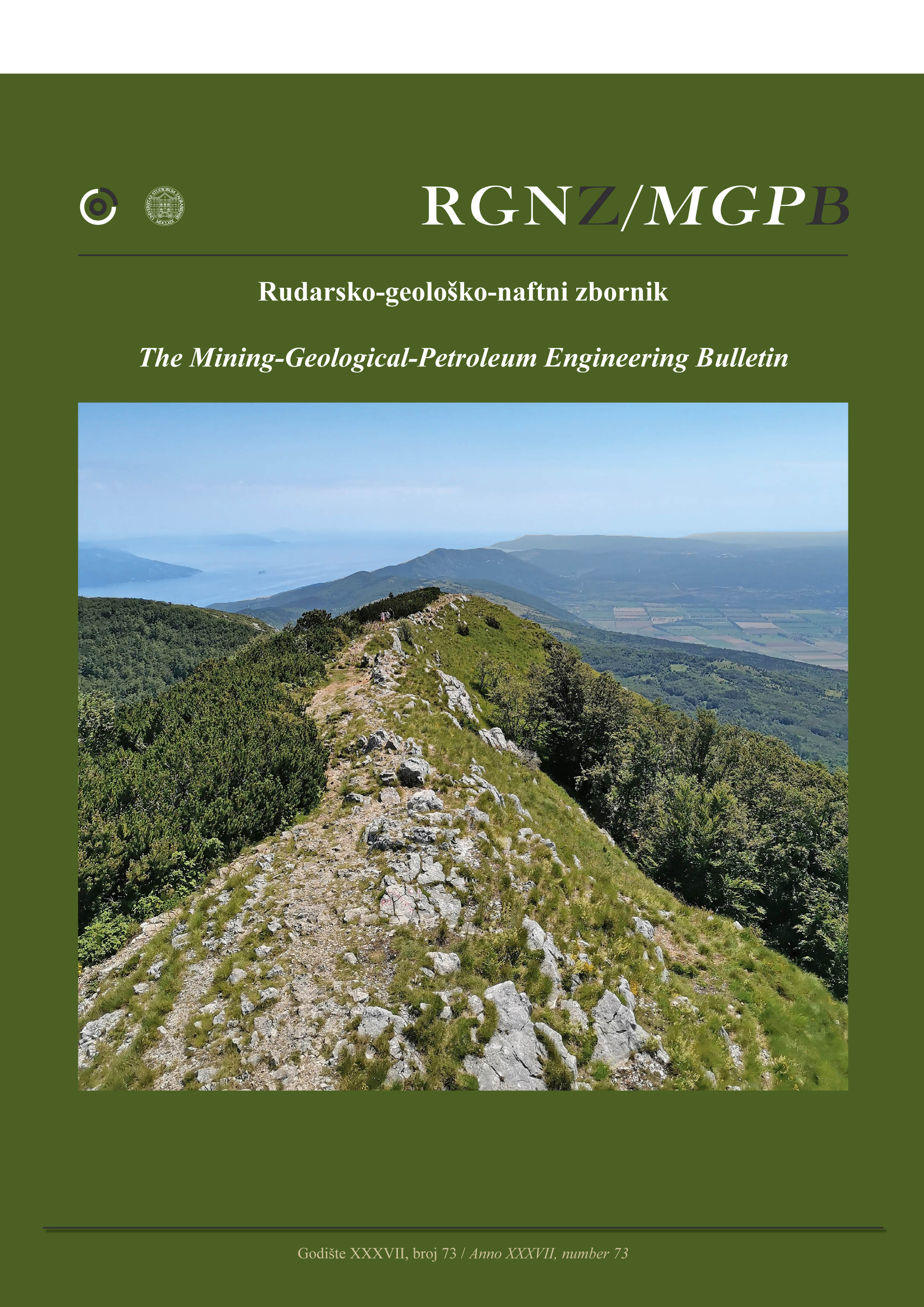Influence of low permeability barrier on hot water flooding performance – a numerical investigation
DOI:
https://doi.org/10.17794/rgn.2025.2.5Keywords:
low permeability barrier, oil saturation distribution, injection pressure buildup, cumulative oil production, numerical investigationAbstract
The existence of a low permeability barrier acts as a geological discontinuity in oil reservoirs. The presence of such discontinuities could alter the flow of injected hot water in the formation and would significantly influence the hot water flooding projects. The aim of the present work is to demonstrate the influence of a low permeability barrier on hot water flooding performance. For this purpose, we have formulated a numerical model by coupling energy transport and multiphase fluid flow models under non-isothermal conditions. The influence of the horizontal and vertical arrangement of the low permeability barriers in a reservoir formation is investigated. The low permeability barrier has a significant effect on the oil recovery when it is located closer to the injection well; subsequently, the production performance of oil recovery is improved by shifting the low permeability barrier towards a production well. The spatial (location) shift of the low permeability barrier towards the production well reduces its effect on the hot water flooding performance, and in turn, cumulative oil production improves. The cumulative oil produced is found to be 344.14 m3 in 200 days when the low permeability barrier is situated near the production well during hot water flooding, which is improved by 2.23% and 6% with respect to low permeability located at the middle of the reservoir, and closer to the injection well, respectively. The pressure buildup decreases at the injection well with the presence of a low permeability barrier near the injection well. The low permeability barriers present at a slight offset location from the middle of the reservoir in the vertical direction provide a better cumulative oil production than the low permeability barrier arranged with no offset condition and fully offset condition in the reservoir. The cumulative oil produced is found to be 341 m3 in 200 days when the low permeability barrier is present at a slightly offset condition in the middle of the reservoir, which is improved by 1.30% and 1.24% with respect to no offset condition and fully offset condition, respectively. The present study can provide the pathways for the future investigation of low permeability barriers for hot water flooding.
Downloads
Published
Issue
Section
License
Copyright (c) 2024 Md Irshad Ansari, Suresh Kumar Govindarajan

This work is licensed under a Creative Commons Attribution 4.0 International License.
Creative Commons-BY
Authors who publish with this journal agree to the following terms:
In agreeing this form, you certify that:
- You read the ethical codex of the RGN zbornik available at journal web.
- You submitted work is your original work, and has not previously been published and does not include any form of plagiarism.
- You own copyright in the submitted work, and are therefore permitted to assign the licence to publish to RGN zbornik.
- Your submitted work contains no violation of any existing copyright or other third party right or any material of an obscene, libellous or otherwise unlawful nature.
- You have obtained permission for and acknowledged the source of any illustrations, diagrams or other material included in the work of which you are not the copyright owner.
- You have taken due care to ensure the accuracy of the work, and that, to the best of your knowledge, there are no false statements made within it.
- All co-authors of this submitted work are aware of, and in agreement with, the terms of this licence and that the submitted manuscript has been approved by these authors.
Publication licence
You retain copyright in your submitted work, according to journal license policy (CC-BY). By signing this form you agree that RGN zbornik may publish it under the publication licence. In summary the licence allows the following:
Anyone is free:
- To copy, distribute, display, and perform the work.
- To make derivative works.
Under the following conditions:
- The original author must always be given credit.
- The work may not be used for commercial purposes.
- If the work is altered, transformed, or built upon, the resulting work may only be distributed under a licence identical to this one.
Exceptions to the licence
In addition to publishing the work printed under the above licence, RGN zbornik will also enable the work to be visible online.
The journal editorial can change the licence rules anytime but it cannot retroactively restrict author(s) rights.


